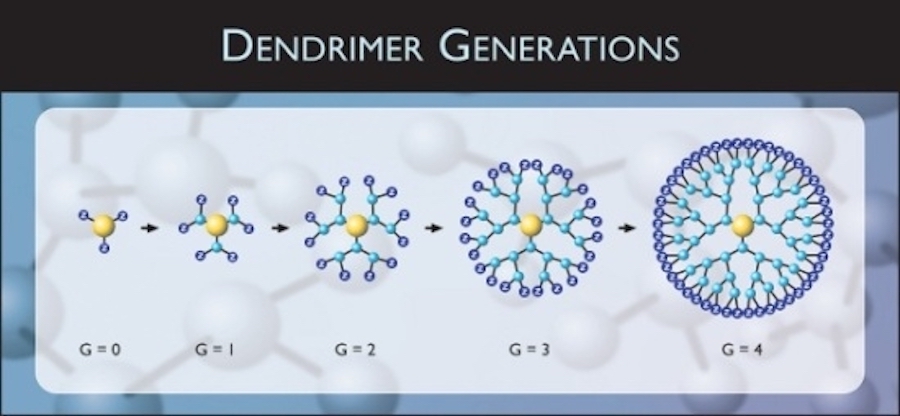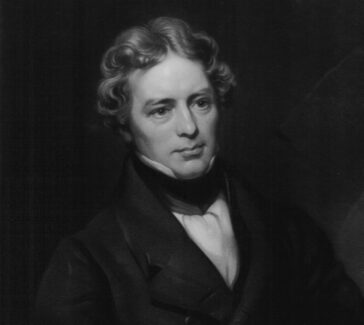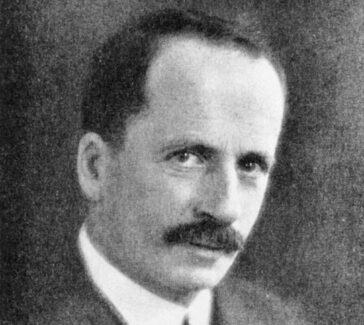Donald A. Tomalia
While a scientist at Dow Chemical, Tomalia created special treelike polymers called dendrimers that have numerous existing and potential applications, especially in biomedicine.

When Donald A. Tomalia (b. 1938) first proposed building polymers with an ordered, predictable branching structure, his colleagues at the Dow Chemical Company greeted him with skepticism since polymers typically run like linear chains and are chaotic.
Unfazed, Tomalia continued his research mostly on Friday afternoons, when Dow permitted scientists to explore their own pet projects. An amateur horticulturist, Tomalia appreciated that a branching manner of growth would mimic nature’s own in growing crystals, trees, and myriad other natural things.

Early Research into Dendrimers
In 1979 he and a colleague made a breakthrough. By adding methanol as a solvent to normal polymer production procedures, they created discrete units, each of which had two branches. For the next six years Tomalia and other scientists in the Dow laboratories improved on this initial discovery.
They were able to produce polymers with a central, hollow core and tendrils that branched outward, one from another, in a precise, predictable manner. Tomalia called them dendrimers, after dendra, the Greek word for tree.
Applications in Biomedicine
Since the central core of a dendrimer is hollow, it can be thought of as a pouch or cavity that can be used to trap or store other molecules. A dendrimer’s cavity size can be tailored to hold different molecules or therapeutic agents, and its chemical properties can be engineered to release its contents in a specific setting. These discoveries have led to significant applications for these nanoscale delivery devices in biomedicine. Since 1998 they have been in use for heart-attack detection and as a contrasting agent in magnetic resonance imaging.
Starting in 2008, researchers could buy dendrimers to use as vectors to carry DNA into cells. As of 2010 an AIDS-prevention gel containing dendrimers was in the final stages of clinical testing. Robert S. Langer is one among many researchers who now incorporate dendrimers into their biomedical research.
Potential Nonbiological Uses
Since their inception dendrimers of all kinds have been built both by divergent growth, as described above, and convergent strategies. In the latter, branching is directed inward from what will become the periphery of the molecule. Among the many dendrimers are ones that are light-harvesting and others that are self-destructing. Potential nonbiological uses are in catalysis, computer miniaturization, sensors, and new materials. As with fullerenes (see Richard Smalley, Robert Curl, and Harold Kroto), wide application seems possible.
Biotech Ventures
Tomalia was born in Owosso, Michigan, not far from Flint, where he earned his bachelor’s degree in chemistry at the University of Michigan. He liked chemistry because it seemed to present an ever-unfolding series of problems to be solved. Soon after graduation he went to work at Dow, and the company supported his doctoral studies in physical organic chemistry at Michigan State University.
Since inventing dendrimers Tomalia has remained deeply involved in dendrimer-related research and has developed a working partnership with Dow, his former employer. Dow assigned its entire intellectual property portfolio and associated royalties in the field of dendrimers to Dendritech, a dendrimer production company in Midland, Michigan, cofounded by Tomalia in 1992. In 2002 he founded Dendritic NanoTechnologies in Mount Pleasant, Michigan, in a joint venture with StarPharma in Melbourne, Australia.
Achievements and Recognition
After serving as scientific director of the National Dendrimer and Nanotechnology Center at Central Michigan University, Tomalia departed in 2010 to establish a nanotechnology company called NanoSynthons LLC. He is currently CEO and director of the National Dendrimer and Nanotechnology Center located at the NanoSynthons site in Mount Pleasant.
Tomalia holds more than 100 dendrimer-related U.S. patents and has published more than 180 articles. He has appointments as adjunct professor (Department of Chemistry) at the University of Pennsylvania and affiliate professor (Department of Physics) at Virginia Commonwealth University. He currently serves as an associate editor of the Journal of Nanoparticle Research (Springer); a member of the Executive Advisory Board, European Foundation for Clinical Nanomedicine (CLINAM); and a faculty member, Faculty 1000 Biology. In 2011 Tomalia was inducted into the Thomas Reuters Hall of Citation Laureates in Chemistry, a listing of the 40 most highly cited international scientists in the field of chemistry.
Featured image: Photo of Donald Tomalia courtesy of Dendritic Nanotechnologies, Inc.



